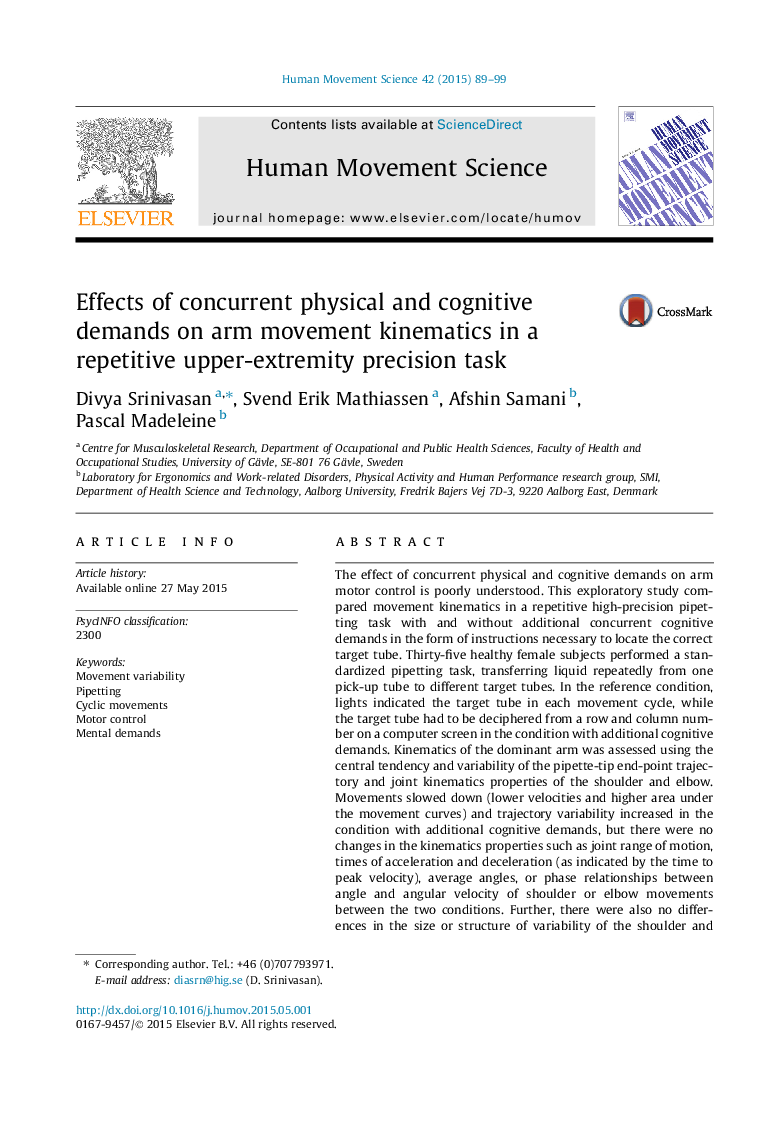| Article ID | Journal | Published Year | Pages | File Type |
|---|---|---|---|---|
| 928233 | Human Movement Science | 2015 | 11 Pages |
•We assessed shoulder and elbow kinematics in a repetitive upper-extremity task.•Increased cognitive demands slowed down arm movements and increased end point variability.•Cognitive loads didn’t affect range of motion, average angles or phase relationships.•Size and structure of motor variability was not changed by increased cognitive demands.•Findings suggest a maintained motor repertoire in spite of additional cognitive demands.
The effect of concurrent physical and cognitive demands on arm motor control is poorly understood. This exploratory study compared movement kinematics in a repetitive high-precision pipetting task with and without additional concurrent cognitive demands in the form of instructions necessary to locate the correct target tube. Thirty-five healthy female subjects performed a standardized pipetting task, transferring liquid repeatedly from one pick-up tube to different target tubes. In the reference condition, lights indicated the target tube in each movement cycle, while the target tube had to be deciphered from a row and column number on a computer screen in the condition with additional cognitive demands. Kinematics of the dominant arm was assessed using the central tendency and variability of the pipette-tip end-point trajectory and joint kinematics properties of the shoulder and elbow. Movements slowed down (lower velocities and higher area under the movement curves) and trajectory variability increased in the condition with additional cognitive demands, but there were no changes in the kinematics properties such as joint range of motion, times of acceleration and deceleration (as indicated by the time to peak velocity), average angles, or phase relationships between angle and angular velocity of shoulder or elbow movements between the two conditions. Further, there were also no differences in the size or structure of variability of the shoulder and elbow joint angles, suggesting that subjects could maintain the motor repertoire unaltered in the presence of these specific additional cognitive demands. Further studies should address motor control at other levels of concurrent cognitive demands, and with motor tasks that are less automated than the pipetting task used in the present study, so as to gain an increased understanding of the effect of concurrent cognitive demands for other activities of relevance to daily life.
